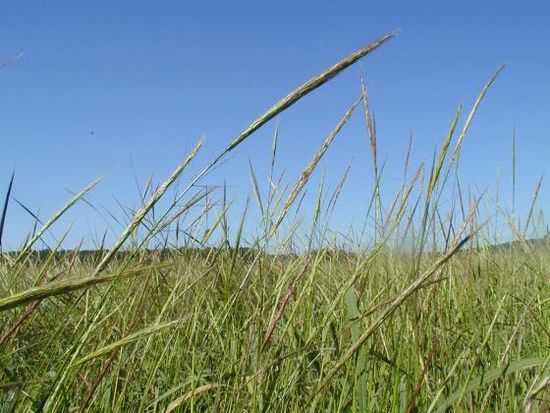|
|
| (3 intermediate revisions by the same user not shown) |
| Line 1: |
Line 1: |
| − | Silver lake has a health population of [wild rice]. According to the watershed district, it is the only urban lake in Minnesota with wild rice – another reason why our little lake is so special. | + | Silver lake has a health population of [https://en.wikipedia.org/wiki/Wild_rice wild rice]. |
| | | | |
| − | {{Hatnote|For wild rice related to cultivated forms, see [[Rice]].}}
| + | [[File:wild-rice.jpg|550px|thumb|center|Wild Rice]] |
| − | {{Hatnote|"Indian rice" redirects here. The wildflower ''[[Fritillaria camschatcensis]]'' is sometimes also called "Indian rice" or "wild rice". For the wild rice of India and Bangladesh, see ''[[Porteresia]]''.}}
| |
| − | {{Hatnote|"Zizania" redirects here. For the patrol craft tender which served in the United States Navy from 1917 to 1919, see [[USS Zizania (1888)|USS ''Zizania'']].}}
| |
| − | {{taxobox
| |
| − | |name = Wild rice
| |
| − | |image = WildRice23.jpg
| |
| − | |regnum = [[Plantae]] | |
| − | |unranked_divisio = [[Angiosperms]] | |
| − | |unranked_classis = [[Monocots]] | |
| − | |unranked_ordo = [[Commelinids]] | |
| − | |ordo = [[Poales]]
| |
| − | |familia = [[Poaceae]]
| |
| − | |subfamilia = [[Ehrhartoideae]]<ref name=Kellogg>{{cite journal|last=Kellogg|first=Elizabeth A.|title=The Evolutionary History of Ehrhartoideae, Oryzeae, and ''Oryza''|journal=Rice|date=30 January 2009|volume=2|issue=1|pages=1–14|doi=10.1007/s12284-009-9022-2|url=http://link.springer.com/article/10.1007%2Fs12284-009-9022-2|accessdate=6 July 2013}}</ref>
| |
| − | |tribus = [[Oryzeae]]<ref name=Kellogg />
| |
| − | |genus = '''''Zizania'''''
| |
| − | |genus_authority = [[Carl Linnaeus|L.]]
| |
| − | |subdivision_ranks = Species
| |
| − | |subdivision =
| |
| − | * ''Zizania aquatica'' L.
| |
| − | ** ''[[Zizania aquatica var. aquatica]]''
| |
| − | ** ''[[Zizania aquatica var. brevis]]'' [[Norman C. Fassett|Fassett]]
| |
| − | * ''[[Zizania latifolia]]'' ([[August Grisebach|Griseb.]]) [[Nicolai Stepanovitch Turczaninow|Turcz.]] ex [[Otto Stapf|Stapf]]
| |
| − | * ''Zizania palustris'' L.
| |
| − | ** ''[[Zizania palustris var. interior]]'' (Fassett) Dore
| |
| − | ** ''[[Zizania palustris var. palustris]]''
| |
| − | * ''[[Zizania texana]]'' [[A. S. Hitchcock|Hitchc.]]
| |
| − | }}
| |
| | | | |
| − | '''Wild rice''' ([[Ojibwe language|Ojibwe]]: '''''Manoomin'''''; also called '''Canada rice''', '''Indian rice''', and '''water oats''') are four species of [[Poaceae|grasses]] forming the genus '''''Zizania''''', and the grain that can be harvested from them. The grain was historically gathered and eaten in both [[North America]] and [[China]]. While now a delicacy in North America, the grain is eaten less in China,<ref name="Food in China" />{{Rp|165}} where the plant's stem is used as a vegetable.
| + | Wild rice (also called "Canada rice", "Indian rice", and "water oats") are four species of grasses forming the genus Zizania, and the grain that can be harvested from them. The grain was historically gathered and eaten in both North America and China. While now a delicacy in North America, the grain is eaten less in China, where the plant's stem is used as a vegetable. Wild-rice grains have a chewy outer sheath with a tender inner grain that has a slightly vegetal taste. |
| | + | The plants grow in shallow water in small lakes and slow-flowing streams; often, only the flowering head of wild rice rises above the water. The grain is eaten by dabbling ducks and other aquatic wildlife, as well as by humans. |
| | | | |
| − | Wild rice is not directly related to Asian [[rice]] (''[[Oryza sativa]]''), whose wild progenitors are ''[[Oryza rufipogon|O. rufipogon]]'' and ''[[Oryza nivara|O. nivara]]'', although they are close cousins, sharing the [[tribe (biology)|tribe]] [[Oryzeae]]. Wild-rice grains have a chewy outer sheath with a tender inner grain that has a slightly vegetal taste.<ref>
| |
| − | {{cite web
| |
| − | | title = What Type of Rice is Healthiest?
| |
| − | | last = Reinagel | first = Monica
| |
| − | | url = http://nutritiondiva.quickanddirtytips.com/what-type-of-rice-is-healthiest.aspx
| |
| − | | date = 19 April 1010| accessdate = 28 January 2010
| |
| − | }}
| |
| − | </ref>
| |
| | | | |
| − | The plants grow in shallow water in small [[lake]]s and slow-flowing [[stream]]s; often, only the flowering head of wild rice rises above the water. The grain is eaten by [[dabbling duck]]s and other aquatic wildlife, as well as by humans.
| + | See the recent [[Media:Silver_Lake_Wild_Rice_Abundance.pdf | survey]] of wild rice in Silver Lake. According to the watershed district, it is the only urban lake in Minnesota with wild rice – another reason why our little lake is so special. |
| − | | |
| − | == Species ==
| |
| − | Three species of wild rice are native to North America:
| |
| − | * '''Northern wild rice''' (''Zizania palustris'') is an [[annual plant]] native to the [[Great Lakes (North America)|Great Lakes]] region of [[North America]], the aquatic areas of the [[Boreal forest of Canada|Boreal Forest]] regions of [[Northern Ontario]], [[Alberta]], [[Saskatchewan]] and [[Manitoba]] in [[Canada]] and [[Minnesota]], [[Wisconsin]] and [[Michigan]] in the [[US]].
| |
| − | * '''Wild rice''' (''Z. aquatica''), also an annual, grows in the [[Saint Lawrence River]] and on the [[Atlantic Ocean|Atlantic]] and [[Gulf of Mexico|Gulf]] coasts of the [[United States]].
| |
| − | * '''Texas wild rice''' (''[[Zizania texana|Z. texana]]'') is a [[perennial plant]] found only in a small area along the [[San Marcos River]] in central [[Texas]].
| |
| − | One species is native to [[Asia]]:
| |
| − | * '''Manchurian wild rice''' (''[[Zizania latifolia|Z. latifolia]]''; incorrect synonym: ''Z. caduciflora''), is a perennial native to China.
| |
